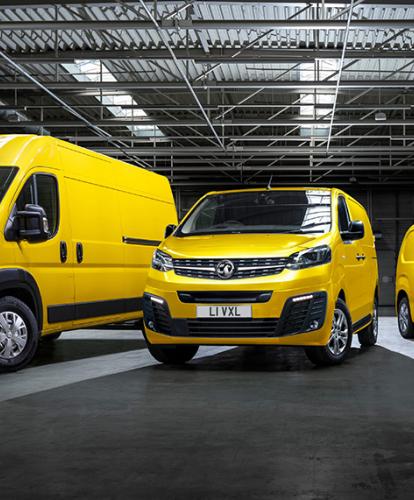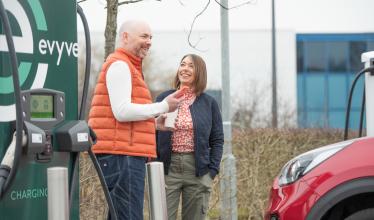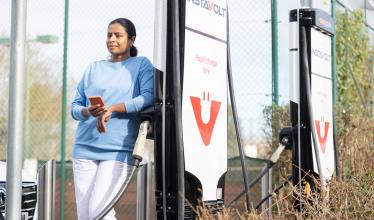Electric vans have rapidly changed, evolving from niche products for most businesses to core vehicles. Numbers are constantly on the rise, and the attributes of e-LCVs ideally suit urban deliveries, for example. Add in low running costs and tax incentives, and many firms and organisations are making the switch to electric – from small businesses to multi-nationals. As such, we’ve put together a list of some of the best electric vans available in 2022.
If you’d like to learn more about the benefits, range, costs and charging times of electric vans beforehand, you can also read our Guide to Electric Vans.
Best Electric Vans 2022
E-LCV sales are growing fast, which should come as little surprise considering the rate of change in the electric car market. Electric van sales have been aided by a number of new models in the last year or so, which has given not only greater range to existing models, but also brought a number of new vehicles to market.
Load areas and payloads are typically the same or similar to diesel-powered counterparts, and electric driving ranges for plug-in LCVs will comfortably cover many daily mileages. From ‘last-mile’ delivery specialists to long-range electric workhorses, this is our round-up of the UK’s best electric vans 2022.
Citroen e-Dispatch / Peugeot e-Expert / Vauxhall Vivaro-e / Toyota Proace Electric

Previously this covered three models from three different brands – though all part of the same group. Now, Toyota is added to the mix; same van, but a new badge on the front. The Toyota Proace Electric, Citroen e-Dispatch, Peugeot e-Expert, and Vauxhall Vivaro-e share the same platform, powertrain, and much of the bodywork, with the latter three coming under the Stellantis group, which has done a deal with Toyota. As such, picking between the three largely comes down to preference on style and any deals going.
Featuring a range of almost 200 miles on a charge, the Toyota, Citroen, Peugeot, and Vauxhall electric vans are available with a choice of two battery sizes and a variety of body sizes, depending on brand picked. One key differentiator is the Proace Electric which although only available in one body style and battery version, does come with Toyota’s huge 10-year warranty.
Payload is rated at around one tonne, and charging has been comprehensively thought through by the engineers. The on-board charger can charge at up to 11 kW AC, whilst ultra-rapid 100 kW DC charging is available to allow for quick turnarounds – essential for those racking up a high daily mileage.
Citroen e-Berlingo / Peugeot e-Partner / Vauxhall Combo-e / Toyota Proace City Electric

As above, what was a Stellantis group of models – Citroen, Vauxhall, and Peugeot – this has seen the addition of Toyota again with the Proace City Electric. Sharing the same powertrain as the larger e-LCV models above, all four provide more compact vans with a longer range but lower payload rating – all as you would expect for this market.
Charging specifications include the option of an 11 kW AC on-board charger and standard 100 kW DC capabilities via a CCS inlet. With a useful range and quick recharging times, all four models combine to see their respective brands offer a comprehensive line-up in the e-LCV space.
Fiat E-Ducato

Fiat’s E-Ducato is the first electric LCV to come along from the Italian manufacturer, and it also packs in the best specification for most. A range of up to 175 miles is available for drivers, comfortably longer than any other large panel van around.
Payload is rated at almost 1,900kg, and there are two batteries to choose between – a 47 kWh or 79 kWh pack; neither impact load space. Recharging is possible at 50 kW DC, and there are choices between 7 kW, 11 kW, and 22 kW AC on-board chargers.
Maxus e Deliver 3

The Maxus e Deliver 3 is a purpose-built electric van, meaning it’s lighter than most rivals which have been designed to deal with engines as well. As such, the driving range is good for the battery size, with a choice between 35 kWh and 52.2 kWh.
Size-wise, it sits in a similar space to the Nissan e-NV200 – somewhere between compact LCVs and one-tonne panel vans. Payload is up to 905kg, and the Maxus is rapid charge capable.
Mercedes-Benz eSprinter

The Mercedes-Benz eSprinter is one of the few models on the market that offers electric vehicle technology in a large van. Available with a choice of battery sizes and body styles, the popular Sprinter is likely to continue that trend in electric form.
Offering a range of almost 100 miles on a charge, the eSprinter can rapid charge in as little as half an hour, yet retains a payload of more than 700kg. As an urban delivery vehicle, there are few to compare.
Mercedes Benz eVito

Mercedes-Benz is another firm – like Stellantis brands above – that is aiming to offer a comprehensive electric-LCV line-up, and the eVito is a key part of that. The medium-sized van has a range of more than 90 miles on a charge from a 41 kWh battery.
Charging can be carried out at 7.4 kW for a full charge in around six hours, though there is no rapid charging functionality.
Nissan e-NV200

Due to be replaced in the next year or so, Nissan’s e-NV200 is a pioneer in the electric van space, and as such is the grand old model on the market. Regular revisions have seen range boosted and additional body styles however, so the model hasn’t been ignored in its dotage.
Range is 124 miles on a charge from the same 40 kWh battery as found in the Nissan Leaf, while DC rapid charging at 50 kW is possible or 7 kW on AC units.
Renault Kangoo E-Tech

Renault’s Kangoo Z.E. was another early entrant to the electric van market, but has recently been launched as a full second-generation model following regular updates over the years of the previous generation.
The new Kangoo E-Tech gets a 45 kWh battery, 80 kW DC rapid charging capabilities, 11 kW or 7.4 kW AC charging, and a 90 kW electric motor. Payload is 600kg.
Renault Master E-Tech

The Renault Master E-Tech’s driving range is not particularly good, at up to 75 miles according to official figures. However, it makes up for that with its size and versatility.
A payload of almost 1.5 tonnes is possible, and the Master E-Tech is available not only in panel van form, but also box vans, tippers, drop-sides, Lutons – and all directly from Renault. There’s no rapid charging option, but AC charging for the 33 kWh batter will take about six hours.
Renault Twizy Cargo

Certainly not for everyone, the Renault Twizy Cargo takes out the rear seat in the electric quadricycle and replaces it with a small load area. Not really practical for much more than takeaway deliveries or small packages, the Twizy Cargo is an alternative to a scooter, with better protection from the elements.
Sharing the rest of its specifications with the passenger-focused Twizy, Renault provides a range of around 50 miles on a charge, which will take about three and a half hours via the tethered three-pin plug kept up front.
Renault Zoe Van

Based on the best-selling electric supermini, Renault has created the ZOE Van, replacing the rear seats with a flat load area, added a bulkhead, and inserted a load shelf. It’s not large, but it is certainly a unique competitor in the e-LCV market.
What’s best about the Zoe underpinnings is that the range is huge for an electric van. Up to 245 miles on a charge is possible, and there remains the same 50 kW DC rapid charging option that car buyers get.
Volkswagen e-Crafter

Volkswagen’s aim with the e-Crafter is to offer the practicality of the conventional diesel model, but with an electric powertrain. This means that VW offers a payload of up to 1,750kg with the e-Crafter, a huge load for an e-LCV.
Range is a little over 100 miles on a charge, with 7 kW fast AC charging and 40 kW DC rapid charging possible. This keeps charging times down to 40 minutes on a rapid unit.
Volkswagen eTransporter

Based on the ever popular Transporter van, the eTransporter provides a range of up to 82 miles on a charge. Fettled by ABT – the company that runs Audi’s works Formula E team – the eTransporter might not have the longest range, but it does have a choice of two body styles and a one tonne payload.
Charging can be carried out at up to 7 kW AC or 50 kW DC on rapid points, with the eTransporter a great option for local deliveries.
We hope you’ve found our round-up of the best electric vans helpful. If you’d like to learn more about the benefits, range, costs and charging times of electric vans, you can also read Zapmap’s Guide to Electric Vans.



